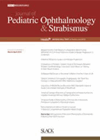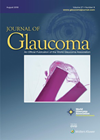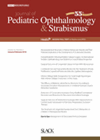You searched for "perimetry"
A pituitary tumour from 1927
The author shares a clinical case from Edinburgh Royal Infirmary’s archives. It is not often in the course of a clinical career that one gets the opportunity to review a patient who had been treated by a pioneer neurosurgeon some...Use of pattern-reversal VEP in congenital Zika syndrome (CZS) assessment
The authors conducted pattern reversal visual evoked potential (PRVEP) in children with congenital Zika syndrome (CZS) and report the correlates with visual acuity, fundus alterations and severity of microcephaly at birth. This was a cross-sectional study of 37 children with...Conference Report: Scottish Ophthalmological Club Spring 2025 Meeting
The biannual Scottish Ophthalmological Club (SOC) meeting took place on 21 February 2025 in the rolling hills of Stirling at the Stirling Court Hotel. Kindly hosted by NHS Forth Valley, the free paper session commenced after a cordial opening message...Four key questions and answers for glaucoma practitioners
1 October 2018
| Chrysostomos D Dimitriou
|
EYE - Glaucoma
In this discussion paper the authors pose four questions for the clinician diagnosing and monitoring glaucoma, and supply evidence-based answers. Worldwide, the most common functional test used to diagnose and monitor glaucoma is static automated perimetry, most typically with a...
My Top Five: Promising gene therapies for ocular conditions
4 December 2024
| Ameer Khamise
|
EYE - Vitreo-Retinal
Gene therapy, a pivotal advancement in modern medicine, particularly shines in ophthalmology. By targeting defective genes with engineered vectors, this approach promises significant strides in treating inherited retinal diseases. This article reviews the top five gene therapies in late-stage trials,...
My Top Five: Promising gene therapies for ocular conditions
4 December 2024
| Ameer Khamise
|
EYE - Vitreo-Retinal
Gene therapy, a pivotal advancement in modern medicine, particularly shines in ophthalmology. By targeting defective genes with engineered vectors, this approach promises significant strides in treating inherited retinal diseases. This article reviews the top five gene therapies in late-stage trials,...
Refined glaucoma referral practice offers prospect of improved capacity and expanded role for primary eye care professionals
1 February 2018
| Rod McNeil
|
EYE - Glaucoma
Glaucoma is the most frequent cause of irreversible blindness worldwide and the second leading cause of blindness in the UK [1,2]. The global prevalence of glaucoma in 2010 was approximately 3.5% for people aged 40-80 years, according to Jonas et...
Deciphering dark retinal patches
3 October 2024
| Blanca Flores, Anastassios Kostakis
|
EYE - Vitreo-Retinal
We present a case of bilateral extensive dark without pressure (DWP) located outside the retinal vascular arcades in a young female. This retinal finding is benign but, in some instances, darkened retinal patches could be associated with potential sight-threatening conditions....
OVD influences
This prospective case series provides data on a previously uninvestigated area. Eyes due to have routine phakoemulsification were divided into six groups according to ophthalmic viscosurgical device (OVD) type. After cataract extraction aphasic refraction using intraoperative aberrometry with the ocular...Scheimpflug imaging in paediatric glaucoma
The authors undertook this study to report the corneal tomographic characteristics of eyes that had surgery for controlled primary congenital glaucoma (PCG) compared to a control group. The study included 44 eyes of 27 children (18 males) having surgery for...White dot syndromes
1 September 2015
| Gwyn Samuel Williams
|
EYE - Vitreo-Retinal
It is fair to say that trainees and consultants who are not medical retina specialists are a bit scared of the so called retinal ‘white dot syndromes’. It is easy to understand why this is the case, as almost every...
The Eye Health Network – an ‘optometry-first’ approach to eye care
1 April 2014
| Stephen McPherson, John Olson
|
EYE - Cornea
Historically, in NHS Grampian, ophthalmology and optometry worked separately, with even the process of optometry referral to hospital occurring only at the behest of the patient’s general practitioner (GP). Criteria for referral were not discussed and feedback after referral was...







